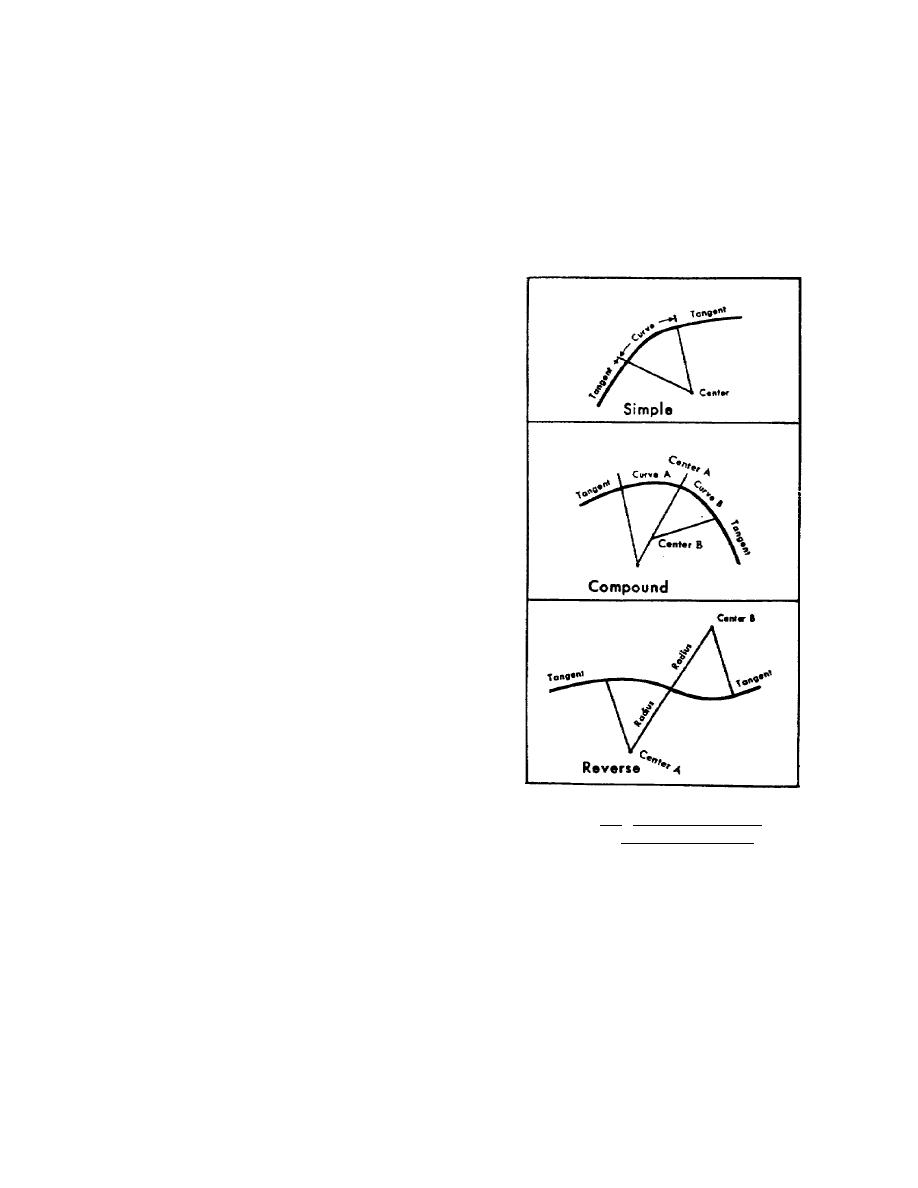
3.3.
CURVES AND THEIR LINING
Curves may be classified as simple or circular, compound, or reverse. Study figure 3.1 as you read the
definitions to follow. A simple or circular curve is one with uniform radius; compound and reverse curves are
merely combinations of simple ones. A compound curve consists of two simple curves of different radii, both
bending in the same direction. A reverse curve is made up of two curves going in opposite directions, one
following on the other; the letter S is an example. Reverse curves require a tangent between them at least the
length of a locomotive. But a tangent of at least 300 feet makes construction and maintenance as well as train
movements easier.
The rail on the outside of a railway curve is
arbitrarily de -fined as the line rail, as paragraphs
1.25 and 1.26 explain. This is the rail that must first
be correctly lined. The inner one is then lined by
gaging it from the outer rail.
3.4.
EFFECT
OF
CURVATURE
ON
EQUIPMENT
The sharpness of curves is of extreme
importance. Locomotives and rolling stock must be
designed to operate on those over which they are to
travel. For example, a locomotive with a long, rigid
wheelbase is unable to negotiate sharp curves
without spreading the track gage. Curvature adds
additional resistance to a train's normal resistance to
movement. Naturally, this reduces the normal
tonnage capability of a locomotive just as a grade
does. Where curves occur on grades, this resistance
is further increased. If a locomotive's maximum
capability is the hauling of a 4,000-ton train up a 1.2
percent grade, it will stall if the resistance of a sharp
curve is superimposed on the grade. To enable this
type of locomotive to haul
Figure 3.1. Simple, Compound,
and Reverse Curves.
63



 Previous Page
Previous Page
